| |
| |
 |
 |
| |
 |
|
August 30, 2019 |
|
| |
 Clear patches of canola plants that are yellowing prematurely could be diseased, and are a good starting point for a pre-harvest disease survey. CanolaWatch has compiled a resource for growers on pre-harvest disease scouting in canola.
» Read more...
Clear patches of canola plants that are yellowing prematurely could be diseased, and are a good starting point for a pre-harvest disease survey. CanolaWatch has compiled a resource for growers on pre-harvest disease scouting in canola.
» Read more...
The Government of Canada will invest $1.6 million in Pulse Canada, supporting the establishment of harmonized pulse ingredient standards and building awareness of the sustainability of growing pulses.
» Read more...
Researchers from North Dakota State University conducted field trials comparing tillage systems to further promote conservation tillage in the Midwest United States. After four years, researchers observed that yields rarely differed among the four tillage systems.
» Read more...
|
| |
|
| |

Enlist E3™ Soybeans - Now available for 2020 planting
Introducing Enlist E3™ soybeans, a more advanced seed with high yield potential and a robust herbicide tolerance. Spray it with Enlist Duo™, part of the Enlist™ weed control system, for a better low drift, near-zero volatility solution.
Here’s what you need to know:
- Enlist E3 soybeans are available in high yielding genetics with agronomic traits
- Enlist E3 soybeans provide robust herbicide tolerance to 2, 4-D, glyphosate and glufosinate
- A multi-mode of action program approach is recommended to maximize weed control
- Enlist Duo herbicide can be used in Enlist E3 soybeans with confidence as a pre-emergent or post-emergent herbicide
- Enlist Duo with Colex-D™ technology reduces volatility and potential for drift to non-target plants
Enlist™ E3 soybeans available for 2020 planting. Talk to your local seed supplier. Learn more at
enlistcanada.ca
®, ™ Trademarks of Dow AgroSciences, DuPont or Pioneer and affiliated companies or their respective owners. © 2019 CORTEVA
The transgenic soybean event in Enlist E3™ soybeans is jointly developed and owned by Dow AgroSciences LLC and M.S. Technologies, L.L.C. The Enlist weed control system is owned and developed by Dow AgroSciences LLC.
|
| |
|
| |
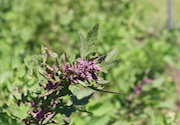 Spelt and quinoa are growing in popularity in Western Canada, but not without the extra work of early growers pioneering the development of those crops agronomically and economically. But as growers learn more and uncover best management practices, is it worth adding a novel crop into the rotation?
» Learn more
Spelt and quinoa are growing in popularity in Western Canada, but not without the extra work of early growers pioneering the development of those crops agronomically and economically. But as growers learn more and uncover best management practices, is it worth adding a novel crop into the rotation?
» Learn more |
| |
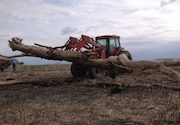 With wetter falls in recent years, there are many lessons that can be taken from Manitoba where spring is synonymous with flooding season. A panel of Manitoba agronomists dispel myths about the impact flooding has on a field, touch on nutrient replacement and comment on seeding after a flood.
» Learn more
With wetter falls in recent years, there are many lessons that can be taken from Manitoba where spring is synonymous with flooding season. A panel of Manitoba agronomists dispel myths about the impact flooding has on a field, touch on nutrient replacement and comment on seeding after a flood.
» Learn more |
| |
|
| |
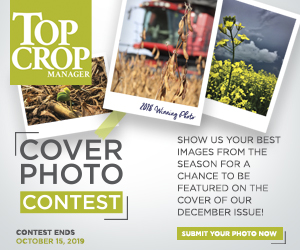
With the spotlight on agriculture in the news, Top Crop Manager wants to share a different perspective: yours. For the duration of the season, we want to see your field views. What does being a part of Canadian agriculture look like to you?
The winner will be featured on the cover of our national December issue. Photos will be accepted until October 15, 2019.
» Learn more... |
| |
|
| |
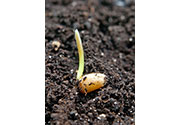 When placing nitrogen with seed, ensuring your fertilizer source won’t damage or set back your seeds is important. ESN’s unique polymer coating makes it safer for seeds than conventional nitrogen sources. In fact, crops can be planted with or immediately after ESN application. There is no waiting period necessary.
» Learn more
When placing nitrogen with seed, ensuring your fertilizer source won’t damage or set back your seeds is important. ESN’s unique polymer coating makes it safer for seeds than conventional nitrogen sources. In fact, crops can be planted with or immediately after ESN application. There is no waiting period necessary.
» Learn more |
|
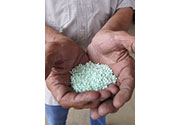 Good storage and handling practices can help you get the most out of your ESN. Compared to conventional fertilizer, there are different considerations that must be applied with ESN. As a rule of thumb, handle ESN with the same care as you would with seed. The greatest cause of damage for ESN, and most other fertilizer types, is excessive handling.
» Find some tips for ESN storage and handling here.
Good storage and handling practices can help you get the most out of your ESN. Compared to conventional fertilizer, there are different considerations that must be applied with ESN. As a rule of thumb, handle ESN with the same care as you would with seed. The greatest cause of damage for ESN, and most other fertilizer types, is excessive handling.
» Find some tips for ESN storage and handling here. |
| |
|
| |
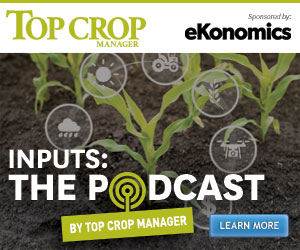
|
| |
| |










